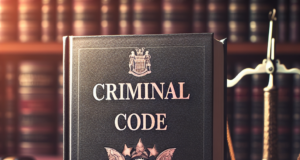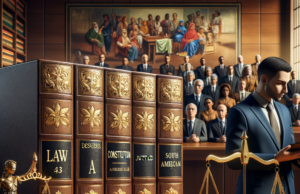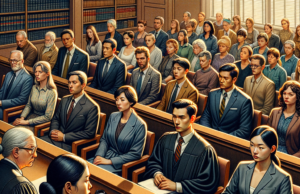
What is the Supreme Team (gang)?
The Supreme Team (gang) was founded by Kenneth “Supreme” McGriff in the early 1980s. The gang was based out of the Jamaica section of Queens, New York, and the gang controlled cocaine and crack-cocaine sales around parts of New York City including Queens and Harlem. According to the U.S. Attorney’s Office for the Eastern District of New York, the gang was turning $200,000 at its peak in 1987 from the selling of drugs.
The First Arrest of Kenneth McGriff
The Supreme Team (gang) leader was first arrested in 1987 after a joint investigation by state and federal authorities. McGriff pled guilty to engaging in a criminal enterprise in 1989, and he was sentenced to 12 years in prison.
McGriff was released on parole in 1994 after he served about 7 years of his sentence. By the end of 1994, he was sent back to prison for violating his parole, and he served another 2 ½ years before he was again released in 1997.
McGriff would soon reorganize the Supreme Team (gang) and continue a life of crime until being arrested a second time.
The Second Arrest of Kenneth McGriff
McGriff was again arrested, and his trial started on January 9, 2007. The government provided evidence during the trial that stated McGriff established and ran a violent criminal organization from 1997 to 2002. The criminal organization engaged in drug trafficking, the use of firearms, racketeering, homicides, and money laundering.
The drug trafficking ring was much larger this time. McGriff moved wholesale amounts of heroin and cocaine throughout New York, but the ring extended to parts of Maryland and North Carolina as well.
The government proved that McGriff was involved in several murders in 2001. The government presented evidence that proved he hired a team of hitmen out of Harlem, New York, to murder a rap artist in Queens, New York named Eric Smith, aka E. Money Bags. The murder occurred on July 16, 2001, because Smith was involved in a shoot-out that killed an associated of McGriff’s named Colbert Johnson, aka Black Just. Smith was shot 11 times at point-blank range while he was sitting in his truck outside a neighborhood barbeque.
The government proved that McGriff hired gunman for a murder that occurred on October 21, 2001 as well. McGriff hired the gunman to murder a close associate of Eric Smith named Troy Singleton. McGriff wanted Singleton dead because he feared Singleton would retaliate after Smith’s death. The hired gunman shot Singleton several times in the head and fired more shots when he was on the ground.
Since McGriff’s arrests, the Supreme Team (gang) all but disappeared. When McGriff was sentenced to life in prison without parole, U.S. Attorney Roslynn R. Mauskopf stated, “The defendant was one of the most dangerous and feared narcotics traffickers in New York. He devoted the better part of two decades to gangs, drug trafficking, and violence, treating his prior sentences as mere interruptions in his pursuit of a life of crime. We are gratified that McGriff will now spend the rest of his life behind bars.”
Source: https://www.justice.gov/usao/nye/pr/2007/2007Mar09b.html
Supreme Team today and Related Cases
The Supreme Team was a notorious drug gang that operated in the New York City area in the 1980s. The gang was known for its violent tactics and drug trade, which made it a target for law enforcement. In recent years, there have been updates on the Supreme Team and related cases, shedding new light on the gang’s activities and how they continue to impact the justice system in the United States.
One of the most significant updates on the Supreme Team was the conviction of a former member, Kenneth “Supreme” McGriff, in 2007. McGriff was convicted of a range of charges, including conspiracy to commit murder, racketeering, and drug trafficking. The Supreme Team, which had gradually faded away since the 1980s, was effectively dismantled with the arrest and conviction of McGriff.
But even after the conviction of McGriff, the Supreme Team remained in the public consciousness. In 2018, the Supreme Team was featured in the Netflix series, “The Seven Five,” which explored the corruption and malfeasance that took place in the New York City Police Department during the same period that the Supreme Team was operating. The documentary raised questions about the connections between the Supreme Team, members of law enforcement, and the wider criminal justice system.
These connections became even more apparent in the case of James “Jimmy Henchman” Rosemond, a former music mogul who was convicted in 2013 of cocaine distribution and conspiracy to commit murder. Rosemond had been accused of having connections to the Supreme Team and using his music industry connections to facilitate drug trafficking. He was ultimately convicted in a trial that implicated several members of the Supreme Team.
The case of James Rosemond is just one example of how the Supreme Team continues to have an impact on the justice system in the United States. The connections between the gang and members of law enforcement and the wider criminal justice system raise questions about corruption and malfeasance. They also highlight the need for continued efforts to address systemic issues within the justice system.
More recent updates on the Supreme Team and related cases include the arrests and convictions of several other former members of the gang. In 2020, one of the most prominent members of the Supreme Team, Gerald “Prince” Miller, was sentenced to life in prison for his involvement in several murders and other violent crimes. Miller was once considered one of the most dangerous members of the Supreme Team and his conviction was a significant victory for law enforcement.
At the same time, the case of the Supreme Team remains a cautionary tale about the need to address systemic issues within the justice system. The connections between the gang and members of law enforcement and the wider criminal justice system raise serious questions about corruption and racial bias. They also highlight the need for continued efforts to address systemic issues within the justice system.
In addition to the Supreme Team, similar cases have emerged around the country, highlighting the pervasiveness of systemic issues within the criminal justice system. The case of George Floyd, who was killed by police officers in Minneapolis in 2020, led to a nationwide reckoning on issues of racial injustice and police brutality.
In conclusion, the Supreme Team and related cases continue to have an impact on the justice system in the United States. Recent updates have shed new light on the gang’s activities and the connections between the gang and members of law enforcement and the wider criminal justice system. These connections raise serious questions about corruption and racial bias and highlight the need for continued efforts to address systemic issues within the justice system. As Americans continue to confront issues of racial injustice and systemic inequality, the case of the Supreme Team serves as a reminder of the urgent need for justice reform.


























